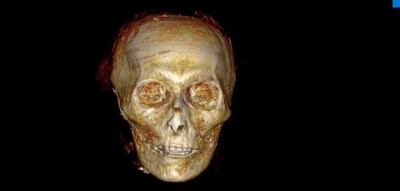Egypt opens tomb of Pharaoh Amenhotep III to visitors after 20-year restoration
By IANS | Updated: October 4, 2025 20:45 IST2025-10-04T20:41:34+5:302025-10-04T20:45:20+5:30
Luxor (Egypt), Oct 4 Egypt's Ministry of Tourism and Antiquities on Saturday opened the tomb of New Kingdom ...

Egypt opens tomb of Pharaoh Amenhotep III to visitors after 20-year restoration
Luxor (Egypt), Oct 4 Egypt's Ministry of Tourism and Antiquities on Saturday opened the tomb of New Kingdom Pharaoh Amenhotep III in the Valley of the Kings to visitors, following more than two decades of restoration.
The tomb, belonging to Amenhotep III who ruled Egypt more than 3500 years ago, is situated on the western side of the famed necropolis. Egyptian antiquities authorities said it was first discovered in 1799 and subsequently looted, including the sarcophagus.
Mohamed Ismail Khaled, Secretary-General of Egypt's Supreme Council of Antiquities, described the tomb as "one of the most important and prominent" in the Valley of the Kings and said its reopening would be an "excellent addition" to Egypt's cultural tourism sector.
The restoration, an international effort involving Egyptian, Italian, and Japanese experts, focused on preserving the tomb's elaborate wall paintings. Conservation work took place in three phases: 2001-2004, 2010-2012, and 2023-2024. Khaled said the tomb's intricate designs and vibrant decorations reflect the artistic and cultural prosperity of the New Kingdom.
"The tomb is renowned for its unique decorations and colored inscriptions depicting religious and symbolic scenes of the king's journey in the afterlife," he said, Xinhua news agency reported.
Amenhotep III ascended the throne as a teenager following the death of his father, Thutmose IV. His nearly 40-year reign is considered a golden age of peace and prosperity, during which he mainly resided in Thebes rather than the traditional capital, Memphis.
During the 21st Dynasty, his mummy, along with other royal mummies, was relocated to the Royal Mummies Cache, later discovered in the tomb of Amenhotep II in 1898. Today, his remains are housed at Cairo's National Museum of Egyptian Civilization.
Disclaimer: This post has been auto-published from an agency feed without any modifications to the text and has not been reviewed by an editor
Open in app